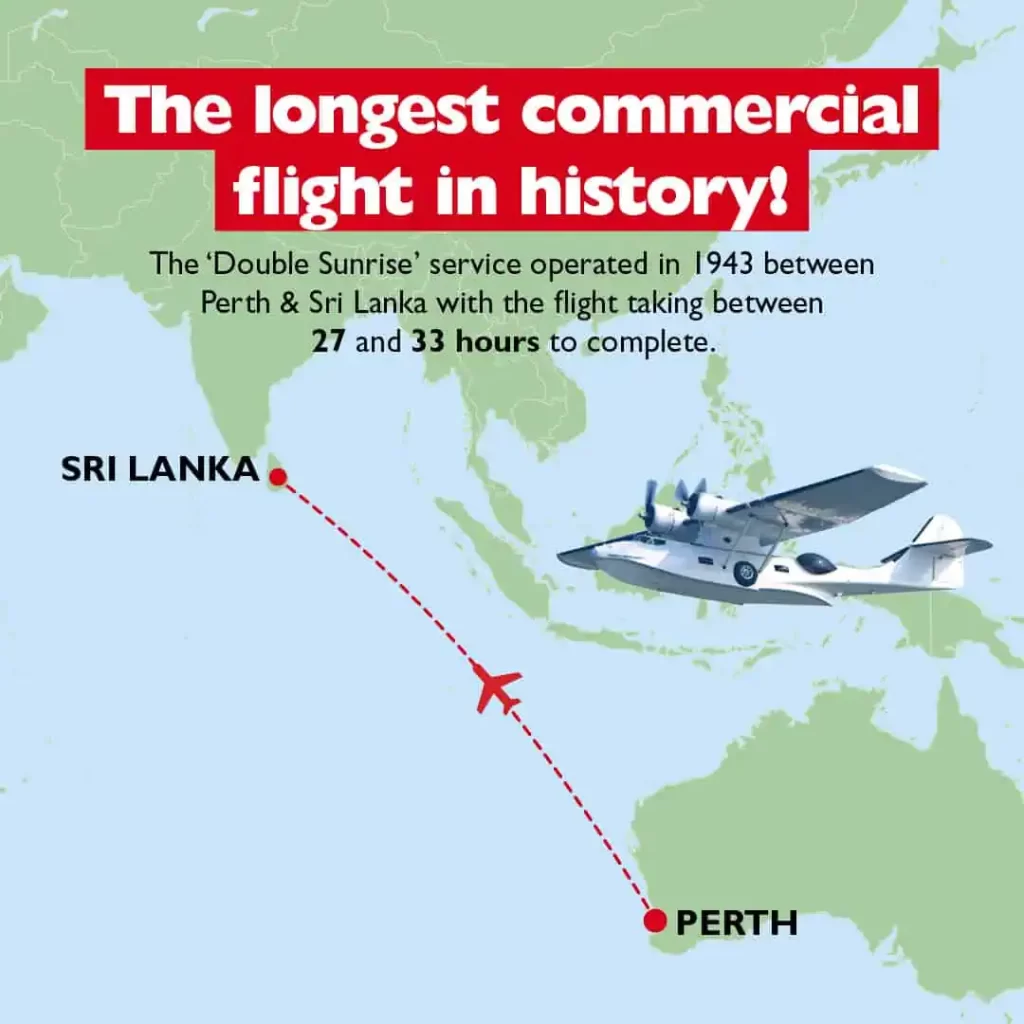The Enigmatic Double Sunrise: A WWII Aviation Mystery

The Forgotten Heroics of Koggala
When discussing Ceylon (now Sri Lanka) in World War II, many recall the Japanese air raids of April 5, 1942. However, the story of Squadron-Leader Leonard Birchall and his crew aboard a Catalina flying boat remains a lesser-known yet pivotal moment. On April 4, Birchall’s crucial warning of an approaching Japanese fleet prepared Ceylon for an imminent assault, showcasing their heroism and enduring resilience.

The Birth of a Radical Idea
With Singapore’s fall to Japan severing aerial ties between Britain and Australia, Capt. W. H. Crowther of Qantas proposed an audacious plan: nonstop flights across the Indian Ocean. This daring idea led to Qantas acquiring five Catalina flying boats, stripped of non-essential equipment and fitted with auxiliary fuel tanks to maximize range.

Koggala Lake: The Chosen Hub
Initially, Trincomalee was considered as the terminal point for these transoceanic flights. However, Koggala Lake’s sheltered waters and the technical support from RAF units made it the ideal choice. The inaugural flight from Koggala Lake on July 10, 1943, marked the beginning of a groundbreaking and perilous air service.

The Double Sunrise Experience
The flights operated under strict radio silence to avoid detection by Japanese warplanes. Passengers witnessed the rare phenomenon of two sunrises during the 28-hour journey, earning them a certificate from Qantas inducting them into “The Order of the Double Sunrise.”

The Double Sunrise: A Hidden Chapter in Aviation History
In 1943, under clandestine circumstances, an unprecedented air operation was launched. Known as the ‘Double Sunrise’ operation, these flights re-established air links between Australia and England after Singapore fell to the Japanese in 1942.

Operating from Crawley near Perth, Western Australia, these flights connected to the RAF base at Lake Koggala near Galle in Ceylon (now Sri Lanka). The name ‘Double Sunrise’ came from crew and passengers witnessing two sunrises on each flight.

Later extended to Karachi in British India (now Pakistan), this route was vital for transporting passengers, mail, and goods between Australia and England during wartime. Both governments and military leaders collaborated to create a special division under Qantas to operate these flights using Catalina flying boats.

These flights became the longest non-stop air route of any airline at that time, covering over 3,500 nautical miles (6,480 km) mainly over the Indian Ocean. The epic journeys required superior navigation skills as they were flown without radios or advanced navigation equipment.
Five Catalina aircraft were named after stars used for celestial navigation: Rigel Star, Spica Star, Altair Star, Vega Star, and Antares Star. With cruising speeds around 125 mph (200 kph), each flight lasted between 27 and 33 hours.
Departures from Western Australia were meticulously timed to ensure that aircraft crossed Japanese-occupied territories under cover of darkness.
Conclusion
The Double Sunrise flights are a hidden gem in aviation history, showcasing human ingenuity and resilience during World War II. These epic journeys remain a fascinating chapter of mystery and endurance in one of history’s most challenging times.

Sources:
The Enigmatic Double Sunrise: Koggala, Catalinas, and the Longest Flight of World War II
